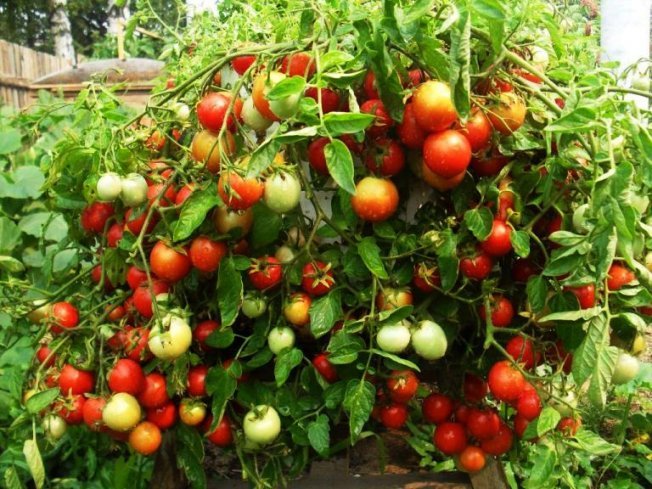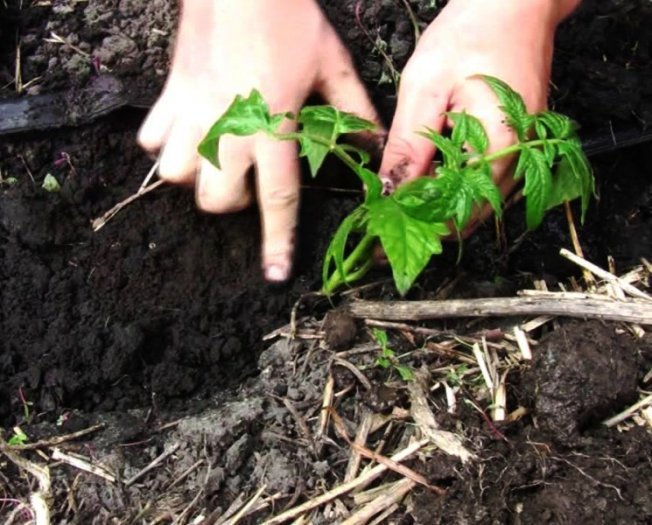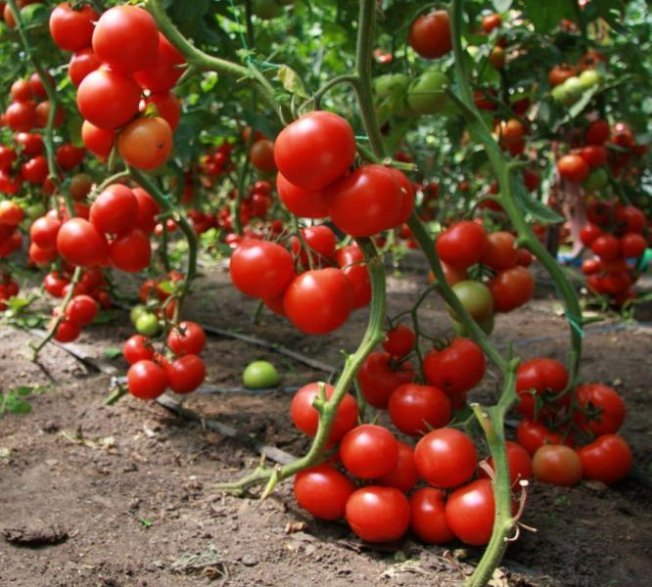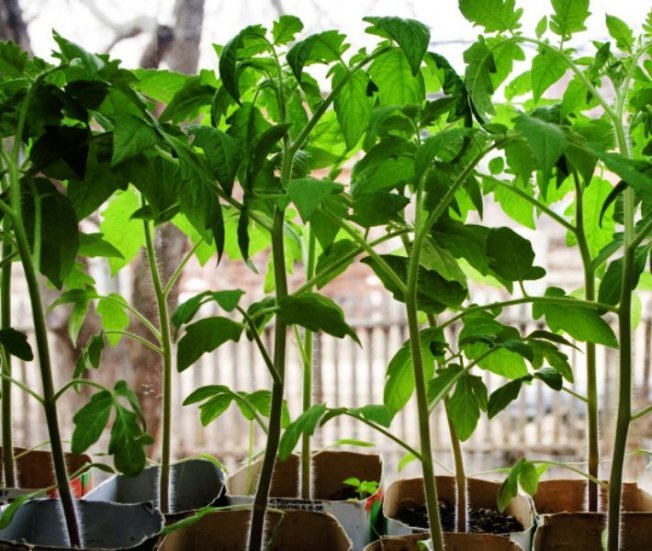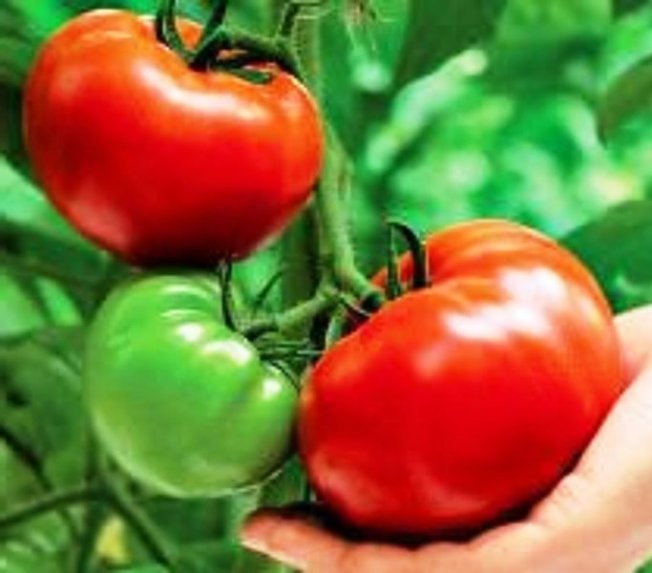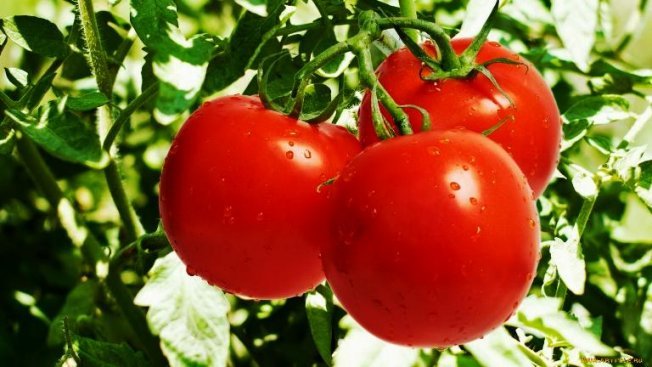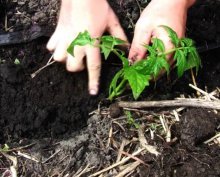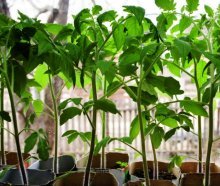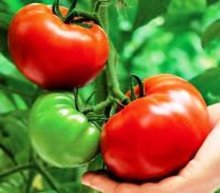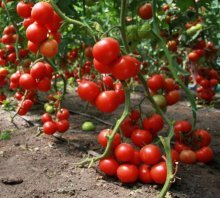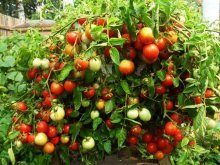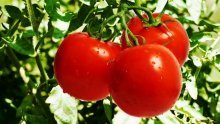Growing tomatoes according to Maslov: increasing the yield by 8 times, true or not?

Sometimes the plot for growing vegetables is small, but the owners strive to get a bountiful harvest from it. And it is in this case that vegetable growers will be interested in a unique system, growing tomatoes according to Maslov: increasing the yield by 8 times is not fantasy, but a practice-tested option, reviews of which are often written by grateful summer residents.
You should familiarize yourself with the features of the method of growing tomatoes in more detail: from preparing and sowing seeds to harvesting.
Content:
- What is the method
- The first planting method to increase productivity
- Option two: what does giving up stepson give?
- Disadvantages and advantages
- What varieties of tomatoes are suitable
- Rules of care
- When the Maslov method is not recommended to be used
- What mistakes should you avoid?
- Reviews
What is the method
An original method of planting tomatoes, which allows for multiple increases in the yield of each bush, was developed by gardener I.M. Maslov. It consists in stimulating root formation. The application of the technique is effective in greenhouses and open ground; a positive effect was also observed when conducting experiments in Siberian conditions.
Growing tomatoes according to Maslov gives an 8-fold increase in yield, thanks to a change in the planting technique of the plant itself.If the tomato bushes are left undisturbed, they spread along the bed; the natural position for the stem allows the plant to develop a strong root system and hold a large number of ripening fruits.
Summer residents, in order to save space, prefer to grow tall bushes, tying them up; as a result, the root system develops poorly, and huge fruits break off fragile branches.
Maslov's system involves planting options that provide plants with the opportunity to build up a root system as the fruits grow and ripen.
The first planting method to increase productivity
There is nothing complicated in this option for planting tomatoes, even for a novice summer resident with no experience in plant growing:
- Seedlings are grown from vertically planted bushes, but in an unheated greenhouse. In such conditions, the stem stretches and becomes strong.
- Then the tall plant is transferred to open ground, but placed horizontally, so that not only the root, but also the stem, including the first pair of leaves, is placed in the furrow. These leaves are removed when planting.
- Place the seedlings with their roots facing south, so it will be easier for the plant to rise towards the sun's rays.
- Cover the seedling with soil; the larger part of the stem is covered, the more roots can form on the stems.
Even weak bushes with such planting actively gain strength.
Sometimes the option of planting seedlings in pairs is used.
Before planting, humus and superphosphate must be added to the holes: this mixture stimulates the development of the root system.
Let's watch an interesting video about growing tomatoes according to Maslov:
Option two: what does giving up stepson give?
Refusal removal of stepchildren allows:
- grow the bottom pair of additional stems;
- after the main stem produces its first fruits, the stepsons are bent to the ground, the leaves are removed, fixed with staples, covered with soil and moistened well.
In order not to greatly shade the main stem, the shoots are removed from the bush to the maximum distance. Stepchildren grow and develop very actively; fruits can be expected to appear on them a couple of weeks after the main stem begins to bear fruit.
This option has proven itself very well; it is called growing in three stems.
The root system of the plant remains common, the stems do not oppress each other.
To speed up the development of the root system while loosening the soil, it is recommended to hill up the bush a little, similar to how we carry out this procedure with potatoes.
The methods do not contradict each other, they can be used on the same bushes: first, horizontal planting is done, then the stepsons take root.
The effectiveness of the second method is especially noticeable in greenhouse conditions; it allows for the formation and ripening of fruits over the entire height of the plant.
When gartering tomatoes in greenhouses, you should be especially careful; the best option is to use loops made of nylon strips fixed to the roof and going down. For each shoot the loop must be separate.
Disadvantages and advantages
Maslov's technique is used for growing low-growing and tall varieties of tomatoes. Caring for bushes planted horizontally is practically no different from those planted in ordinary beds.
Among the advantages we point out:
- a real opportunity to increase productivity, which is very important for small beds;
- formation of tomatoes on the lower part, which reduces the load on the stems;
- the ability to make do with a minimum amount seedlings, accordingly reduce the cost of purchasing expensive seeds;
- the ability to obtain ovaries on each stepson;
- ease of care.
As for the problems that may arise when applying the Maslov technique:
- It is risky to apply the method to low-growing varieties - fruits located near the surface of the soil can rot, so it is recommended that I line the entire bed with mulch;
- you will need to moderate watering; the soil near the bushes should not be allowed to be constantly wet; the best option is drip watering;
- fruiting begins later;
- an increase in the number of ovaries on low-growing varieties leads to a decrease in the weight of one fruit.
There is an opinion among amateur gardeners that, in general, Maslov’s method does not increase the volume of harvest from the garden, but many gardeners are ready to challenge this statement. To draw the appropriate conclusions for yourself, it makes sense to read the reviews of those who have tested the technique in practice.
What varieties of tomatoes are suitable
The greatest yield in greenhouses can be obtained by planting tomatoes of early and medium ripening. In heated greenhouses, even late varieties will be pleased with the yield.
For clarity, we indicate the recommended varieties in the table.
| Tomato variety | Ripening time | Description | Peculiarities |
| Russian giant | Mid-late | The fruits are super-large, have a long shelf life. Powerful stem. | High resistance to diseases |
| Ukrainian giant | Average | The fruits are large, fleshy, pale red in color. | Suitable for pickling and canning, have excellent taste |
| Giant | Average | High yield, strong stem, slightly ribbed fruits, bright red color, flattened shape | Good taste, pronounced aroma. Suitable for canned salads |
| Bull's heart | Late | High-yielding, strong plant, very large, irregularly shaped fruits | Fruits are aromatic, sweetish taste, low moisture content |
| Wonder of the earth | Mid-season | The bush is tall, up to 2 m, the weight of the fruits can reach 1 kg, the average weight of the fruit is up to 400 g. | High taste, very bright color, used for making tomato products |
| Marshmallows in chocolate | Mid-season | High-yielding, the weight of one fruit is within 200 g | Excellent taste of the fruit, beautiful chocolate color |
The fruits of all the above varieties weigh about 600 g; when growing them, they require a garter on supports; hammock nets for fruits are also practiced, which support them during the ripening period.
When choosing varieties, you should give preference to tall ones that are prone to the formation of stepsons. Practice shows that low-growing varieties can increase yields by about 3 times.
You can draw conclusions about the method of growing tomatoes using Maslov’s method based on your own experience in growing different varieties; of course, this will require you to familiarize yourself with the theory, learn to observe plants and systematize the information received.
Let's watch a useful video on how to properly plant tomatoes using Maslov's method:
Rules of care
Choose a place for the beds that is well lit by the sun; in shaded areas, the growth of green mass by the bush slows down, and the stem grows stronger slowly.
The soil for the beds when growing tomatoes using the Maslov method should be prepared so that it is loose, permeable to air and moisture. Before planting, dig up the soil and add compost and ash.
Tomato seedlings need high-quality watering; the air in greenhouses should be humidified using special humidifiers or sprayed daily with warm water.
Seedlings should be picked 2-3 times; when transplanting, the lower leaves are removed and the stem is deepened to form new roots.
The seedlings are planted somewhat overexposed when the stems are strong enough.
After planting in open ground, the plants will need to be fed several times. For the first, you can use an infusion of green nettle or a solution of mullein; for subsequent ones, you will need fertilizers containing a high percentage of potassium. You can use special complex mixtures for tomatoes.
You need to water the bushes at the root. There is no need to root the plants, but the lower and damaged leaves are removed; they can become a source of infection.
After the stepsons grow, they are bent to the ground and covered with soil; the formation of new roots on them occurs very quickly.
When the Maslov method is not recommended to be used
The method cannot be used if:
- the plot is located on a slope;
- groundwater is high;
- sandy soil type.
Poor results are obtained in areas with cold, rainy summers.
What mistakes should you avoid?
The productivity of tomatoes is negatively affected by thickening of plantings. The optimal distance between plants is 0.9 - 1 m.
Refusal to garter bushes: the load on the bush increases, therefore, it requires additional support.
You should not choose unsuitable varieties: there is no need to plant late varieties in open ground, they will not have time to fully produce the harvest before night frosts begin.
Failure can await those who plant seedlings vertically; for enhanced root formation, a horizontal planting option should be used.
Reviews
Does growing tomatoes according to Maslov really allow an 8-fold increase in yield? To find out what happens in practice, let’s study reviews on popular dacha forums.
Irina Andreeva, Nizhny Novgorod
I have been growing tomatoes using this method for many years; my neighbor at the dacha recommended it. I recently read that this is a method developed by Maslov. I am satisfied with the tomato harvest; the harvest suffered only in the year when heavy rains began while the tomatoes were ripening. But here problems would arise with any planting option and with any care. I use Maslov’s method with pleasure and have no intention of giving up.
Margarita Sergeevna, Stavropol region
Since the area of the plot is small, the planting option according to Maslov’s method turned out to be very useful. The yield is really high. Of course, you need to constantly monitor the bushes, but the very sight of the luxurious ripening fruits is inspiring.
Anna, Ivanovo
I tried Maslova’s method for the reason that it was not possible to grow a lot of seedlings, and the store-bought ones failed me several times; I didn’t get the varieties I wanted at all. I plant literally three dozen bushes; there are enough fruits for summer salads and for winter preparations for my family: juice, lecho, and tomatoes. very pleased.
Growing tomatoes according to Maslov allows you to increase the crop yield many times over; the method is especially useful for those summer residents whose plots are not large in size.

